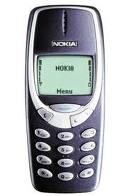LCD TV AND MONITOR DISPLAY PROBLEMS
Note:
Did you know that the LCD panel of an LCD TV is often as expensive as the entire unit itself? What this means is that if your LCD TV has a faulty display, you probably would want to repair it yourself by all means. In fact, making money from repairing LCD panels could actually fetch you NOT a few dozens of dollars a day if you knew how to troubleshoot them. And the good news is troubleshooting LCD modules is relatively REALLY easy because there is usually smaller circuitry on the modules. To be fair, some display faults you see may be caused by a faulty power module or a faulty main board. So it would help to make sure that a display problem originates from the LCD panel, so that you do not spend time on the LCD panel in vain. A lot of care has been taken to ensure that this information is presented in a clear and concise way so that even those with little or no knowledge of electronics may readily understand. However, attempting to carry out repairs on any LCD panel following the directions in this guide is an action you are solely responsible for. The author of this guide will not be held responsible for any damages that result from such actions. that being the case though, I can confidently say that you will find this guide to be very helpful.
Before I go into much of the repair details I would like to present some preliminary information on the subject of this blog: LCD.
Liquid Crystal Display (LCD) is a display technology that has been in use for decades now. You can find it in mobile phones, TVs, digital wrist watches, computer monitors, Walkmans, in fact, in most digital electronics. However, the application of LCD technology especially in large-sized TVs is still a fairly recent development. Interestingly, watching your favorite shows, movies and other programs on an advanced LCD TV is really a great experience. Moreover, LCDs are common because they offer some real advantages over other display technologies; they are lighter and use up much less power than cathode ray tubes (CRTs), for example.
I'm sorry I have not posted a lot of information since I started this blog, but I promise to upload most if not all of my knowledge (and challenges in this field) in a few months time; and on and on because as you know, there is no limit to electronics knowledge. I am a very busy person working in the LCD field of electronics so I urge readers of this blog to be patient with me. However, please check back as often as you can for I will continually update this blog. Many thanks for your patience.
Before I go into much of the repair details I would like to present some preliminary information on the subject of this blog: LCD.
Liquid Crystal Display (LCD) is a display technology that has been in use for decades now. You can find it in mobile phones, TVs, digital wrist watches, computer monitors, Walkmans, in fact, in most digital electronics. However, the application of LCD technology especially in large-sized TVs is still a fairly recent development. Interestingly, watching your favorite shows, movies and other programs on an advanced LCD TV is really a great experience. Moreover, LCDs are common because they offer some real advantages over other display technologies; they are lighter and use up much less power than cathode ray tubes (CRTs), for example.
Typical LCD TV
A digital wrist watch with an LCD screen
A mobile phone with a Liquid Crystal Display
I'm sorry I have not posted a lot of information since I started this blog, but I promise to upload most if not all of my knowledge (and challenges in this field) in a few months time; and on and on because as you know, there is no limit to electronics knowledge. I am a very busy person working in the LCD field of electronics so I urge readers of this blog to be patient with me. However, please check back as often as you can for I will continually update this blog. Many thanks for your patience.



